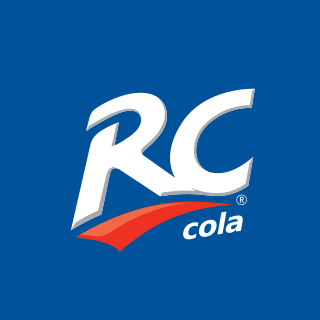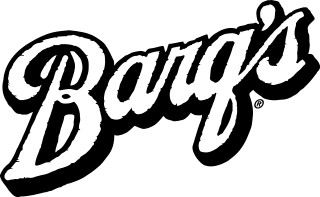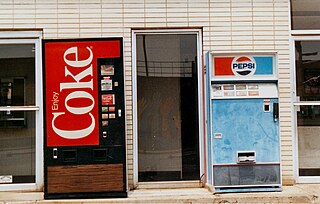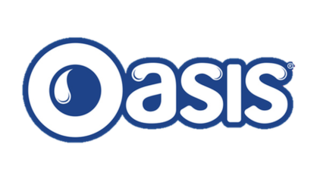
Cola is a carbonated soft drink flavored with vanilla, cinnamon, citrus oils, and other flavorings. Cola became popular worldwide after the American pharmacist John Stith Pemberton invented Coca-Cola, a trademarked brand, in 1886, which was imitated by other manufacturers. Most colas originally contained caffeine from the kola nut, leading to the drink's name, though other sources of caffeine are generally used in modern formulations. The Pemberton cola drink also contained a coca plant extract. His non-alcoholic recipe was inspired by the coca wine of pharmacist Angelo Mariani, created in 1863.

Irn-Bru is a Scottish carbonated soft drink, often described as "Scotland's other national drink". Introduced in 1901, the drink is produced in Westfield, Cumbernauld, North Lanarkshire, by A.G. Barr of Glasgow. As well as being sold throughout the United Kingdom, Irn-Bru is available throughout the world and can usually be bought where there is a significant community of people from Scotland. The brand also has its own tartan. It has been the top-selling soft drink in Scotland for over a century, competing directly with global brands such as Coca-Cola.

RC Cola is a cola-flavored carbonated beverage owned in the United States by Keurig Dr Pepper and internationally by RC Global Beverages, Inc.

Ginger ale is a carbonated soft drink flavoured with ginger. It is consumed on its own or used as a mixer, often with spirit-based drinks. There are two main types of ginger ale. The golden style is credited to the Irish doctor Thomas Joseph Cantrell. The dry style, a paler drink with a much milder ginger flavour, was created by Canadian John McLaughlin.

Cream soda is a sweet soft drink. Generally flavored with vanilla and based on the taste of an ice cream float, a wide range of variations can be found worldwide.

Barq's is an American brand of root beer created by Edward Barq and bottled since the beginning of the 20th century. It is owned by the Coca-Cola Company. It was known as "Barq's Famous Olde Tyme Root Beer" until 2012. Some of its formulations contain caffeine.

The Cola wars are the long-time rivalry between soft drink producers The Coca-Cola Company and PepsiCo, who have engaged in mutually-targeted marketing campaigns for the direct competition between each company's product lines, especially their flagship colas, Coca-Cola and Pepsi. Beginning in the late 1970s and into the 1980s, the competition escalated until it became known as the cola wars.

Kiwiana are certain items and icons from New Zealand's heritage, especially from around the middle of the 20th century, that are seen as representing iconic New Zealand elements. These "quirky things that contribute to a sense of nationhood" include both genuine cultural icons and kitsch.
Lucozade is a British brand of soft drinks and energy drinks manufactured and marketed by the Japanese company Suntory. Created as "Glucozade" in the UK in 1927 by a Newcastle pharmacist, William Walker Hunter, it was acquired by the British pharmaceutical company Beecham's in 1938 and sold as Lucozade, an energy drink for the sick. Its advertising slogan was "Lucozade aids recovery". It was sold mostly in pharmacies up until the 1980s before it was more readily available as a sports drink in shops across the UK.

Vimto is a soft drink first sold in Lancashire in England. It was first manufactured as a health tonic in cordial form, then decades later as a carbonated drink. It contains the juice of grapes, raspberries and blackcurrants, flavoured with herbs and spices. The original recipe was invented in 1908 by John Noel Nichols of Blackburn. Produced domestically by Nichols plc, it is available in cans and bottles and as a draught soft drink in pubs, and the drink is also produced elsewhere under license. Vimto has also been made into a sweet and an ice lolly.

Britvic plc is a British producer of soft drinks based in Hemel Hempstead, England. It is listed on the London Stock Exchange and is a constituent of the FTSE 250 Index. It produces soft drinks under its own name, and several other brands.

Fresca is a grapefruit-flavored citrus soft drink created by The Coca-Cola Company. Borrowing the word Fresca from Italian, Spanish and Portuguese, it was introduced in the United States in 1966. Originally a bottled sugar-free diet soda, sugar sweetened versions were introduced in some markets.

OK Soda is a discontinued soft drink created by The Coca-Cola Company in 1993 that courted the American Generation X demographic with unusual advertising tactics, including neo-noir design, chain letters and deliberately negative publicity. After the soda did not sell well in select test markets, it was officially declared out of production in 1995 before reaching nationwide distribution. The drink's slogan was "Things are going to be OK."

Um Bongo is a brand of juice drinks produced by Sumol + Compal. It was first produced in 1983 by Nestlé, under the Libby's brand, for consumption in the United Kingdom, and was later licensed for production in Portugal. The trademark is currently held by Sumol + Compal, who produces and sells the drink in both countries.
Keystone beer is a product of the Molson Coors Beverage Company in Golden, Colorado. It was first introduced in Chico, California in September 1989. Keystone Ice can be found in canned, kegged, and occasionally, bottled form, with 5.9% ABV. Keystone Light has a 4.13% ABV; roughly equal to other macro "light" brews. Keystone is a primary sponsor for Austin Cindric’s number 2 car in the NASCAR Cup Series.

Dr Pepper is a carbonated soft drink. It was created in the 1880s by pharmacist Charles Alderton in Waco, Texas, and first served around 1885. Dr Pepper was first nationally marketed in the United States in 1904. It is now also sold in Europe, Asia, North and South America. In Australia, New Zealand and South Africa, Dr Pepper is sold as an imported good. Variants include Diet Dr Pepper and, beginning in the 2000s, a line of additional flavors.

Oasis is a non-carbonated bottled soft drink, a product of Orangina Schweppes. In the UK it is manufactured by the Coca-Cola EuroPacific Partners in conjunction with Coca-Cola Company subsidiary Atlantic Industries and in the Republic of Ireland it is distributed by Coca-Cola HBC Ireland. It originated in France by Volvic in 1966 and was initially distributed under the name 'Pulse', until flagging sales led to a rebrand and its current name 'Oasis' being introduced. The drink is described as a "fruit juice drink - with sugar and sweeteners". In May 2013, Oasis was imported to stores and supermarkets around the Ivory Coast, and by the end of 2013, Oasis was imported to stores and supermarkets around Madagascar.

Sprite is a clear, lemon-lime flavored soft drink created by the Coca-Cola Company. Sprite comes in multiple flavors, including cranberry, cherry, grape, orange, tropical, ginger, and vanilla. Ice, peach, Berryclear remix, and newer versions of the drinks are artificially sweetened. Sprite was created to compete primarily against 7-Up.















